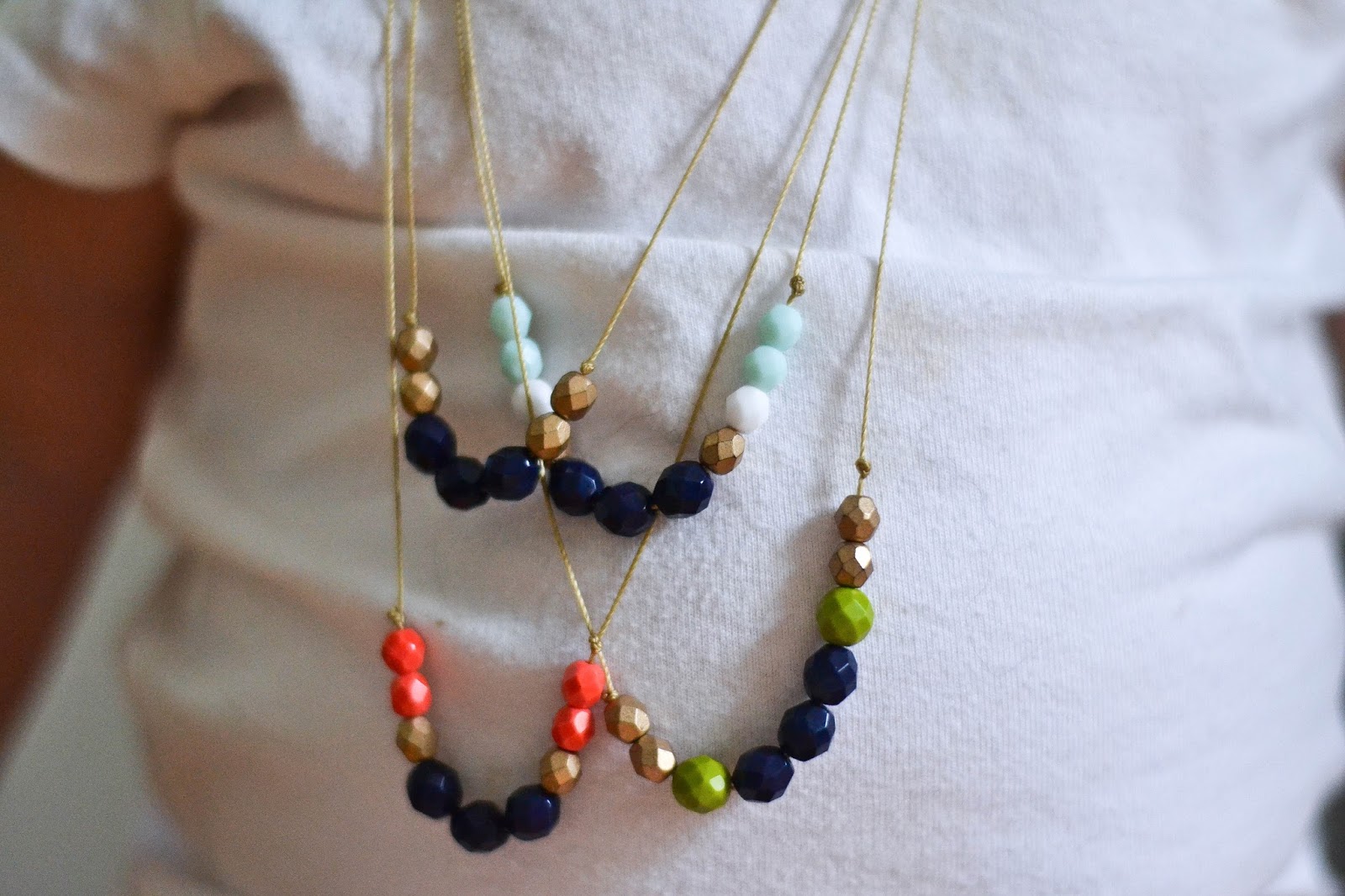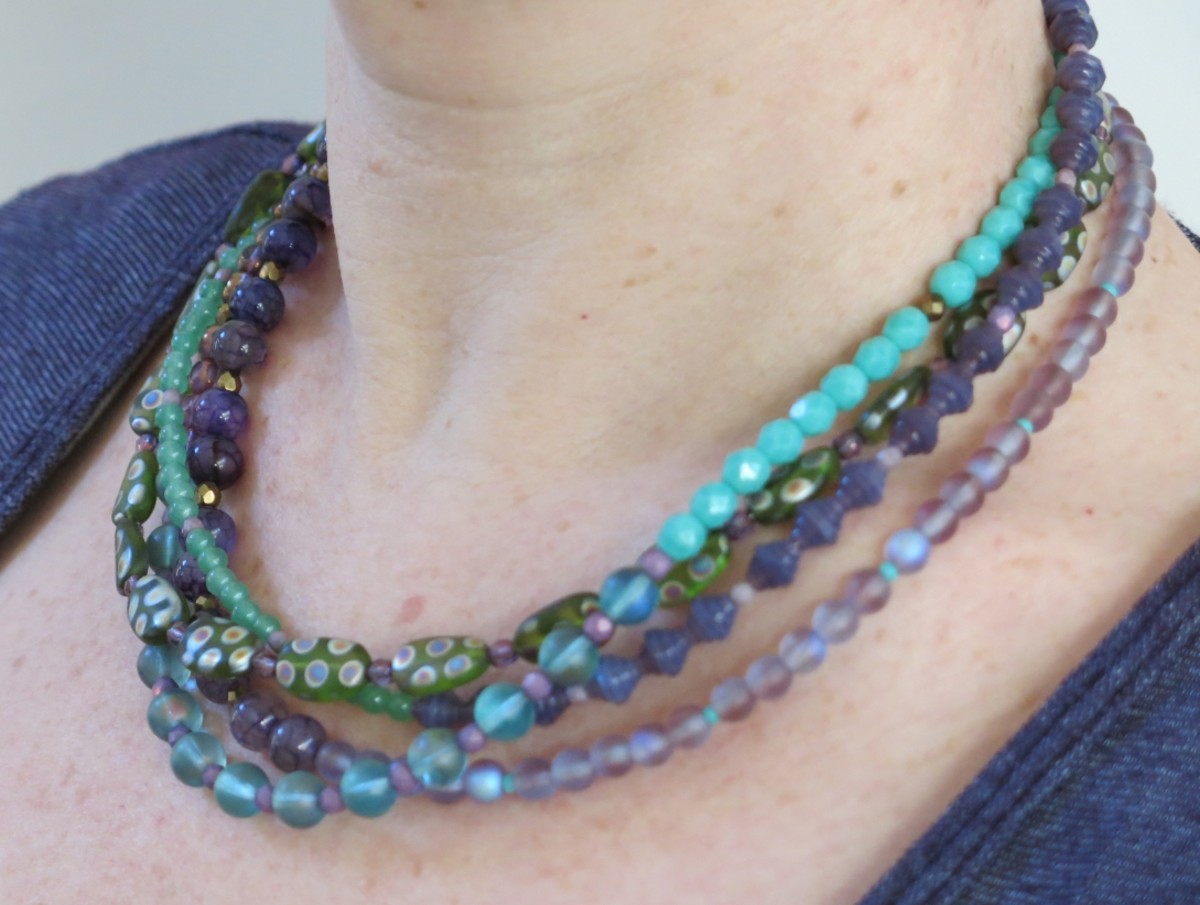Embark on a creative journey with DIY bead necklace designs, where limitless possibilities await. From selecting captivating beads to mastering fundamental stringing techniques, this comprehensive guide empowers you to craft exquisite necklaces that reflect your personal style and inspire admiration.
As you delve into the realm of DIY bead necklace designs, you’ll discover the art of selecting beads, exploring stringing materials, and experimenting with various design ideas. With a touch of creativity and a keen eye for detail, you’ll transform ordinary beads into extraordinary adornments that will turn heads and spark conversations.
Bead Selection

Selecting the right beads is crucial for creating stunning DIY necklaces. There’s a vast array of beads available, each with unique characteristics that influence the necklace’s design and durability.
Beads come in various materials, including glass, gemstones, wood, and metal. Glass beads offer a wide range of colors and shapes, making them versatile for different styles. Gemstone beads add a touch of elegance and sophistication, with their natural beauty and vibrant hues.
Wooden beads provide a rustic and organic feel, while metal beads add a touch of shimmer and sophistication.
Bead Shape and Size
Beads come in various shapes, such as round, oval, square, and cylindrical. The shape of the beads affects the overall look and feel of the necklace. Round beads create a classic and elegant look, while oval beads add a touch of sophistication.
Square beads provide a more modern and geometric aesthetic, and cylindrical beads create a unique and eye-catching design.
Bead size also plays a significant role in determining the necklace’s appearance. Larger beads create a bolder statement, while smaller beads create a more delicate and subtle look. The size of the beads should be proportionate to the length and width of the necklace.
Bead Weight and Durability
When selecting beads for necklaces, it’s essential to consider their weight and durability. Heavier beads may cause the necklace to sag or break if the string or wire used is not strong enough. Lighter beads are more comfortable to wear and less likely to cause discomfort or damage.
Durability is also an important factor to consider. Some beads, such as glass beads, are more fragile and susceptible to breakage. Gemstone beads, on the other hand, are generally more durable and can withstand wear and tear better.
Stringing Materials: Diy Bead Necklace Designs

Selecting the right stringing material is crucial for the durability, flexibility, and overall aesthetic of your bead necklace. Various options are available, each with unique advantages and disadvantages.
The most common stringing materials include:
- Thread: Strong and flexible, making it suitable for delicate beads and intricate designs.
- Wire: Provides strength and rigidity, ideal for heavier beads and pendants.
- Leather cord: Durable and aesthetically pleasing, adds a natural touch to necklaces.
Strength
The strength of the stringing material is essential for supporting the weight of the beads and ensuring the necklace’s durability. Thread is generally weaker than wire, but it is more flexible. Wire is stronger and more rigid, making it suitable for heavier beads.
Leather cord is durable, but it may stretch over time.
Flexibility
The flexibility of the stringing material determines the ease of working with it and the overall drape of the necklace. Thread is very flexible, allowing for intricate designs and knotting. Wire is less flexible, but it provides more support for heavier beads.
Leather cord is moderately flexible, offering a balance between strength and flexibility.
Aesthetics
The aesthetic appeal of the stringing material should complement the beads and the overall design of the necklace. Thread is usually clear or white, making it less noticeable. Wire is available in various colors and finishes, allowing for decorative effects.
Leather cord adds a natural and rustic touch to necklaces.
Choosing the Right Material
When selecting a stringing material, consider the following factors:
- Bead type: Delicate beads require a strong and flexible thread, while heavier beads need a more rigid wire.
- Necklace design: Intricate designs benefit from flexible thread, while simpler designs can use wire or leather cord.
- Personal preference: Ultimately, the choice of stringing material is a matter of personal preference, taking into account the desired look and feel of the necklace.
Basic Stringing Techniques

Mastering the fundamental stringing techniques is crucial for creating durable and aesthetically pleasing bead necklaces. This section will guide you through the essential methods of knotting, crimping, and wire wrapping, providing step-by-step instructions and emphasizing the importance of selecting appropriate tools and materials.
Knotting
Knotting is a versatile and secure technique that involves tying knots between beads to prevent them from sliding off the stringing material. The most common knot used in beading is the surgeon’s knot, which is simple to execute and provides a strong hold.
- Thread a bead onto the stringing material.
- Bring the two ends of the string together and cross them over each other.
- Bring the left end over the right end and pass it through the loop formed by the right end.
- Pull both ends to tighten the knot.
- Repeat steps 1-4 for each bead.
Crimping
Crimping involves using small metal tubes or beads to secure the ends of stringing materials. This technique is particularly useful for creating loops or attaching clasps and other findings. The appropriate crimping tool is essential for ensuring a secure crimp.
- Thread a bead or finding onto the stringing material.
- Slide a crimp tube onto the stringing material, close to the bead or finding.
- Use a crimping tool to flatten the crimp tube, securing it tightly to the stringing material.
- Trim any excess stringing material.
Wire Wrapping
Wire wrapping is a decorative and versatile technique that involves wrapping wire around beads or other components to create intricate designs. This technique requires specialized wire wrapping tools and some practice to master.
- Cut a length of wire and wrap it around a bead several times, leaving a small loop at the end.
- Pass the wire through the loop and pull it tight to secure the bead.
- Continue wrapping the wire around the bead, creating a desired design.
- Trim any excess wire.
Necklace Design Ideas
Designing your own bead necklace is a creative and rewarding experience. There are endless possibilities when it comes to patterns, color combinations, and bead arrangements. Whether you’re a beginner or an experienced jewelry maker, you can create a necklace that is unique and personal to you.
Popular Necklace Designs
There are many different types of necklace designs to choose from. Some of the most popular include:
- Layered necklaces: These necklaces feature multiple strands of beads, often in different lengths and styles. They create a layered look that is both stylish and eye-catching.
- Pendant necklaces: These necklaces feature a single pendant that hangs from a chain or cord. Pendants can be made from a variety of materials, including metal, gemstones, or beads.
- Statement necklaces: These necklaces are designed to make a bold statement. They often feature large beads, bright colors, or unusual designs.
Finishing Touches

The final step in creating a DIY bead necklace is adding finishing touches, which enhance its appearance and functionality. These include clasps, jump rings, and decorative embellishments.
Attaching Clasps and Findings
Clasps are essential for securing the necklace. Choose a clasp that complements the necklace’s style and weight. To attach the clasp, open the jump ring with pliers and thread it through the end loop of the necklace. Close the jump ring securely by squeezing it with pliers.
Decorative Elements, Diy bead necklace designs
Beads, charms, and other decorative elements can enhance the necklace’s visual appeal. Consider adding beads in different sizes, shapes, and colors to create interest and texture. Charms can add a personal touch, while pendants can create a focal point.
Closing Summary

The world of DIY bead necklace designs is a boundless canvas for your imagination. Whether you prefer delicate strands or bold statement pieces, this guide has equipped you with the knowledge and inspiration to create necklaces that are uniquely yours.
Embrace the joy of crafting, experiment with different designs, and let your creativity shine through in every bead you string.
Popular Questions
What are the most durable materials for bead necklaces?
Gemstone, metal, and wooden beads are known for their exceptional durability and can withstand wear and tear.
How do I choose the right stringing material for my necklace?
Consider the weight and size of your beads, as well as the desired flexibility and strength of your necklace.
What are some basic stringing techniques for bead necklaces?
Knotting, crimping, and wire wrapping are fundamental techniques that provide secure and aesthetically pleasing ways to string beads.
